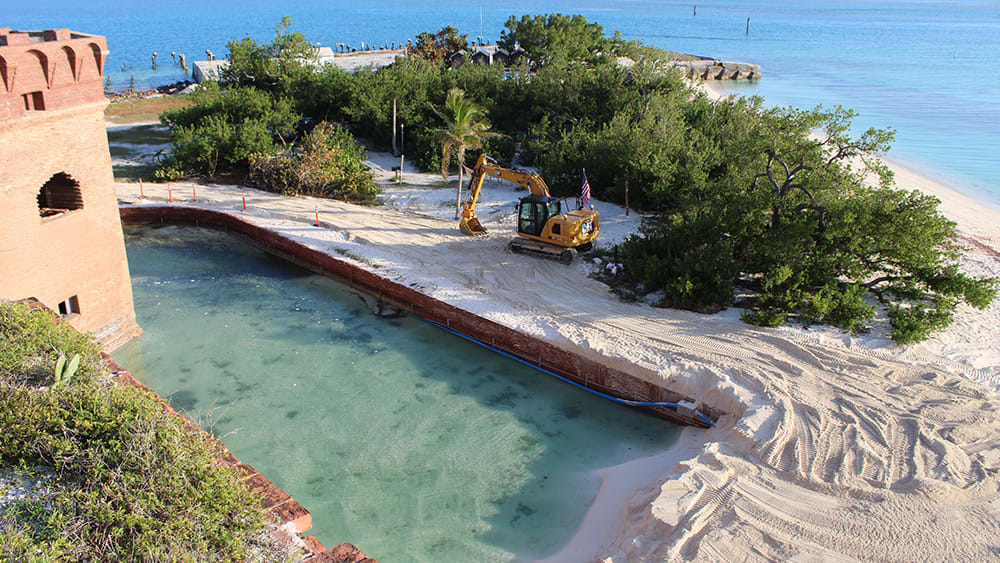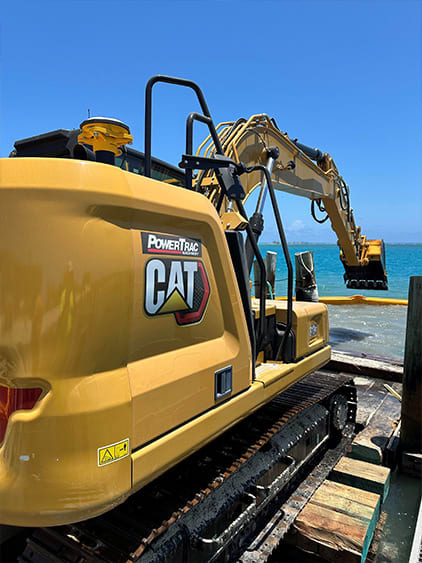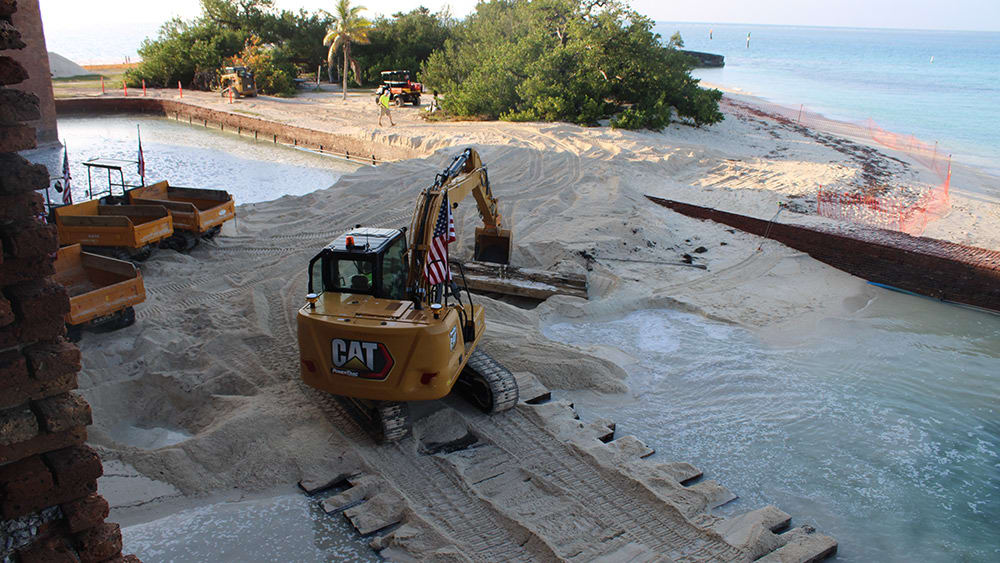Precision preservation: digitally directed dredging benefits off-the-grid fort

Customer Profile: Stone & Lime Historic Restoration Services company is a restoration contractor based in North Brookfield, Mass. Since its founding in 2004, the company has worked on many historic masonry projects spanning from Massachusetts to Texas. Avery Construction Corp. is a civil works contractor founded in 1960 and based in Somers, Conn.
Business Challenge: Dredge sand and sediment around the moats and finger piers
 Solutions:
Solutions:
Benefits:
- Increased productivity
- Improved safety
- Ensured accurate and compliant dredging
- Streamlined communication between remote project teams
- Facilitated preservation of sensitive cultural/natural resources
- Expedited virtual sign offs and approvals
- Enabled verification of removed quantities against estimates
- Provided valuable field and as-built data to inform future work
The almost 200-year-old Fort Jefferson, located in the Dry Tortugas National Park about 70 miles west of Key West, is getting some much needed support from modern means and methods.
The former military fortress, now a popular tourist destination and part of the U.S. National Park Service, is a concrete and limestone hexagonal structure that covers approximately 16 acres with walls up to eight feet thick and a moat surrounding the structure, as an extra layer of protection. Over time, large volumes of sand and sediment have built up in the moat and finger piers that exceed original design depths. The additional sediment places extra pressure on the wall structures. As well, the built-up sediment obstructs proper drainage within the moat and impedes boat access to the piers.

Clearing sand and sediment — about 3,800 cubic yards of sand — required precision to prevent damage to the historic structure. Stone & Lime Historic Restoration and its subcontractor Avery Construction Corp. were tasked with completing the project for the National Park Service.
Subsequently, Avery Construction Corp. operators opted for a hydraulic excavator equipped with submersible housings and Trimble Earthworks Grade Control Platform.
The benefits of the machine guidance were many, according to Christopher Dabek, vice president of Stone & Lime. He continues, “In particular, the team noticed the ability to keep the operators clear of damaging the historic fabric of this structure. We were able to precisely track offset boundaries in confined areas even when working underwater. The confidence that these operators know the exact location of every scoop of material more or less at all times is imperative.”

Throughout the operation, the Trimble Earthworks near real-time production monitoring software tracked dredge depth versus design, calculated removed quantities and extracted cross-section profiles.
Dan Dudzic, project manager with Avery Construction Corp., said, “We were able to confirm and prove we met our dredge cut elevation in near real-time with data collected from WorksManager and WorksOS. That data also provided us with accurate quantity production values at the end of each day.”
Post-dredge surveys were conducted once areas were completed to verify quantities and clearances. Information was shared with the client and contractors for sign offs and billing based on unit prices per cubic yard removed. The project was completed to specification in just three months.